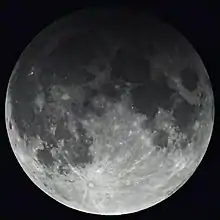| Penumbral Lunar Eclipse October 28, 2042 | |
|---|---|
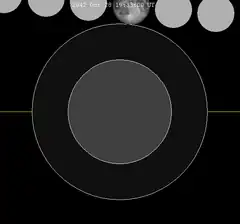 The moon will be imperceptibly dim as the moon clips the Earth's northern penumbral shadow | |
| Series | 156 (- of 81) |
| Duration (hr:mn:sc) | |
| Penumbral | 00:02:00 |
| Contacts UTC | |
| P1 | 19:32:00 |
| Greatest | 19:33:00 |
| P4 | 19:34:00 |
A penumbral lunar eclipse will take place on October 28, 2042, according to some sources. This will be 0.4 days after the Moon reached perigee (making it a supermoon). This event marks the beginning of lunar saros cycle 156 according to some sources, and will be visually imperceptible and other sources have this as a miss.[1]
According to some sources, it will be the last of 5 Metonic cycle eclipses occurring every 19 years on October 28, while the other sources calculate the Moon will miss the shadow.
Visibility
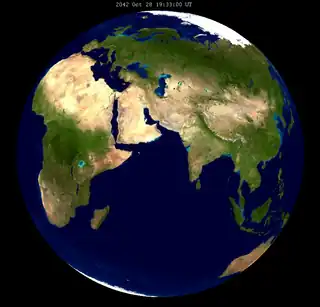
Related lunar eclipses
Lunar year series (354 days)
| Descending node | Ascending node | |||||
|---|---|---|---|---|---|---|
| Saros | Date Viewing |
Type Chart |
Saros | Date Viewing |
Type Chart | |
| 111 | 2038 Jun 17 |
Penumbral |
116 | 2038 Dec 11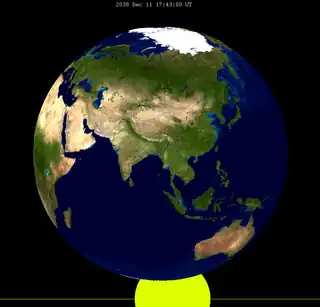 |
Penumbral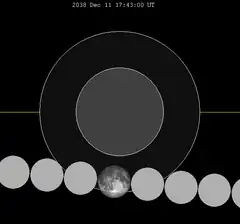 | |
| 121 | 2039 Jun 06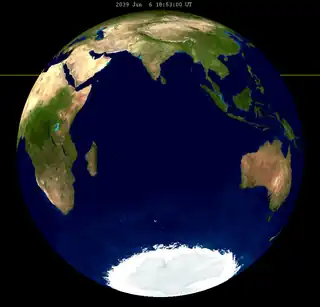 |
Partial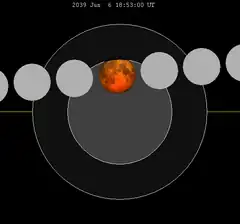 |
126 | 2039 Nov 30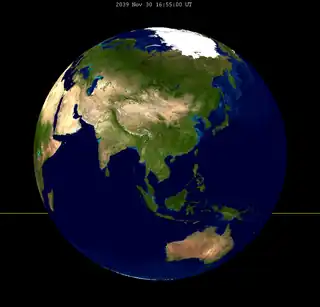 |
Partial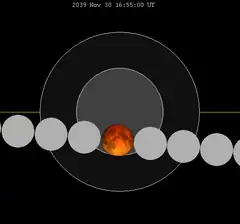 | |
| 131 | 2040 May 26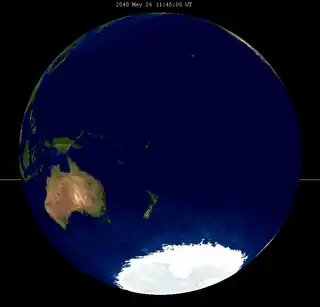 |
Total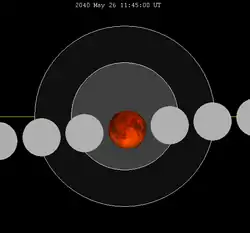 |
136 | 2040 Nov 18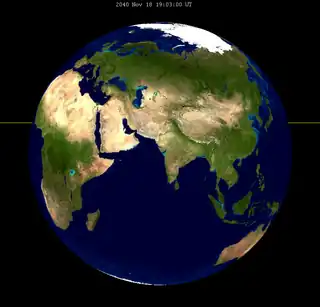 |
Total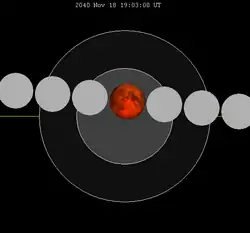 | |
| 141 | 2041 May 16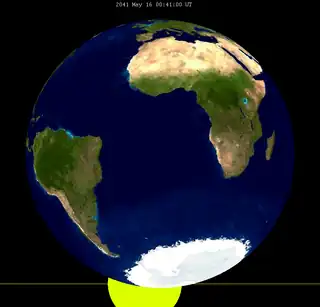 |
Partial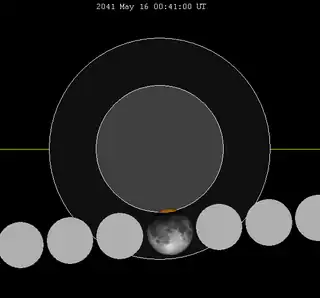 |
146 | 2041 Nov 08 |
Partial | |
| 156 | 2042 Oct 28 |
Penumbral | ||||
| Last set | 2038 Jul 16 | Last set | 2038 Jan 21 | |||
| Next set | 2042 Apr 05 | Next set | 2042 Sep 29 | |||
Metonic series
This eclipse (depending on definitions) is the last of four Metonic cycle lunar eclipses on the same date, October 28–29, each separated by 19 years:
The metonic cycle repeats nearly exactly every 19 years and represents a Saros cycle plus one lunar year. Because it occurs on the same calendar date, the earth's shadow will in nearly the same location relative to the background stars.
| Metonic events: May 4 and October 28 | |
|---|---|
| Descending node | Ascending node |
|
|
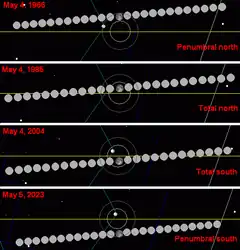 |
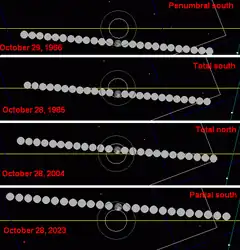 |
See also
Notes
External links
- 2042 Oct 28 chart: Eclipse Predictions by Fred Espenak, NASA/GSFC
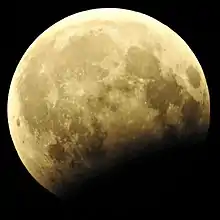
_(cropped).jpg.webp)
